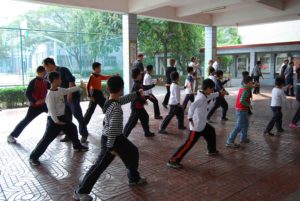Align Motivation with Goals with Mindfulness
By John M. de Castro, Ph.D.
“By using mindfulness, you develop the ability to be present for any given experience just as it is, with full awareness, beginning with breathing and gradually expanding to include sights, sounds, feelings, and ultimately thoughts. Eventually, you learn how to bring mindful awareness to every area of your life. In turn, you improve your level of motivation to fully engage in activities you are involved in.” – Doug Dvorak
During the course of life, we make many choices, some trivial and others of great importance. Choices are driven by motivations. Some of these motives are clear and explicit, such as eating when hungry or buying attractive clothing to attract a mate. But there are also subtle motives that are often unconscious such as a need for affiliation, a need for power, or a need for achievement. These are called implicit motives. To the extent that actions align with implicit motives we are said to be in motivational congruence. This is the degree to which what we are trying to attain lines up with what we truly want deep down inside.
It is common for this congruence to be missing. When this happens, we are unhappy and dissatisfied. For example, I’ve often seen students pursue a certain degree because they see it to be a route to becoming affluent. But, become unsatisfied and change their majors or leave their jobs because this career was not satisfying their deep needs. Mindfulness practice can help make increase awareness of true feelings and desires and what brings happiness. So, it would make sense to postulate that mindfulness training may help improve motivational congruence.
In today’s Research News article “A Brief Mindfulness Exercise Promotes the Correspondence Between the Implicit Affiliation Motive and Goal Setting.” See summary below or view the full text of the study at:
https://www.ncbi.nlm.nih.gov/pmc/articles/PMC5414900/
Strick and colleagues explore the effects of brief mindfulness practice on aligning intrinsic motives with actions, in particular implicit and explicit affiliation motives. They recruited university students and measured their implicit affiliation motives with a test that requires them to provide stories based upon a standardized set of pictures of ambiguous social situations. Their answers are then scored for the levels of affiliation and power intrinsic motivations. They also completed measures of explicit motivations for affiliation, achievement, and power. They were then randomly assigned to a 13 minute, body scan meditation or to a magazine reading control condition. The participants then complete a measure of the degree to which they wanted to achieve affiliation or power goals in a new job situation and how good it would make them feel to achieve these goals. In a final phase the mindfulness and control groups reversed conditions with the prior mindfulness group engaging in the reading and the prior reading group performing the body scan, followed again by measurement.
They found that there was a significant positive relationship between implicit affiliation motives and the selection of explicit affiliation goals and the level of affiliation motivation following the brief mindfulness training but not for the control group. Hence, after a brief mindfulness practice there was greater motivational congruence while after magazine reading there was not. In other words, mindfulness training prompted a better alignment between the students’ affiliation goals and their deep, implicit, affiliation motivation.
These results suggest that mindfulness training increases the individual’s sensitivity to intrinsic motives and likelihood of setting goals that align with these intrinsic motives. Mindfulness appears to improve awareness of the deepest motives and result in a better alignment of these motives with goals and actions. It is interesting that these effects are produced by such a brief body scan meditation and absent a little while later. This suggests that the effects of brief mindfulness training are short-lived. It remains to be seen if more extensive mindfulness training would produce longer lasting effects.
So, align motivation with goals with mindfulness.
“So how can mindfulness help you get and stay more motivated? It’s simple- you need to embrace the here and now. Most people focus too much on the past and past experiences that prevent them from taking action, or they focus way too much on the future and want to know all the steps to follow, and they think they’re not good enough. You need to have a vision, so you know where you’re going, but at the same time, focus on today- what small steps are you going to take today?” – Holistic Wellness Project
CMCS – Center for Mindfulness and Contemplative Studies
This and other Contemplative Studies posts are also available on Google+ https://plus.google.com/106784388191201299496/posts and on Twitter @MindfulResearch
Study Summary
Strick, M., & Papies, E. K. (2017). A Brief Mindfulness Exercise Promotes the Correspondence Between the Implicit Affiliation Motive and Goal Setting. Personality & Social Psychology Bulletin, 43(5), 623–637. http://doi.org/10.1177/0146167217693611
Abstract
People often choose to pursue goals that are dissociated from their implicit motives, which jeopardizes their motivation and well-being. We hypothesized that mindfulness may attenuate this dissociation to the degree that it increases sensitivity to internal cues that signal one’s implicit preferences. We tested this hypothesis with a longitudinal repeated measures experiment. In Session 1, participants’ implicit affiliation motive was assessed. In Session 2, half of the participants completed a mindfulness exercise while the other half completed a control task before indicating their motivation toward pursuing affiliation and nonaffiliation goals. In Session 3, this procedure was repeated with reversed assignment to conditions. The results confirmed our hypothesis that, irrespective of the order of the conditions, the implicit affiliation motive predicted a preference to pursue affiliation goals immediately after the mindfulness exercise, but not after the control task. We discuss implications of these findings for satisfaction and well-being.









